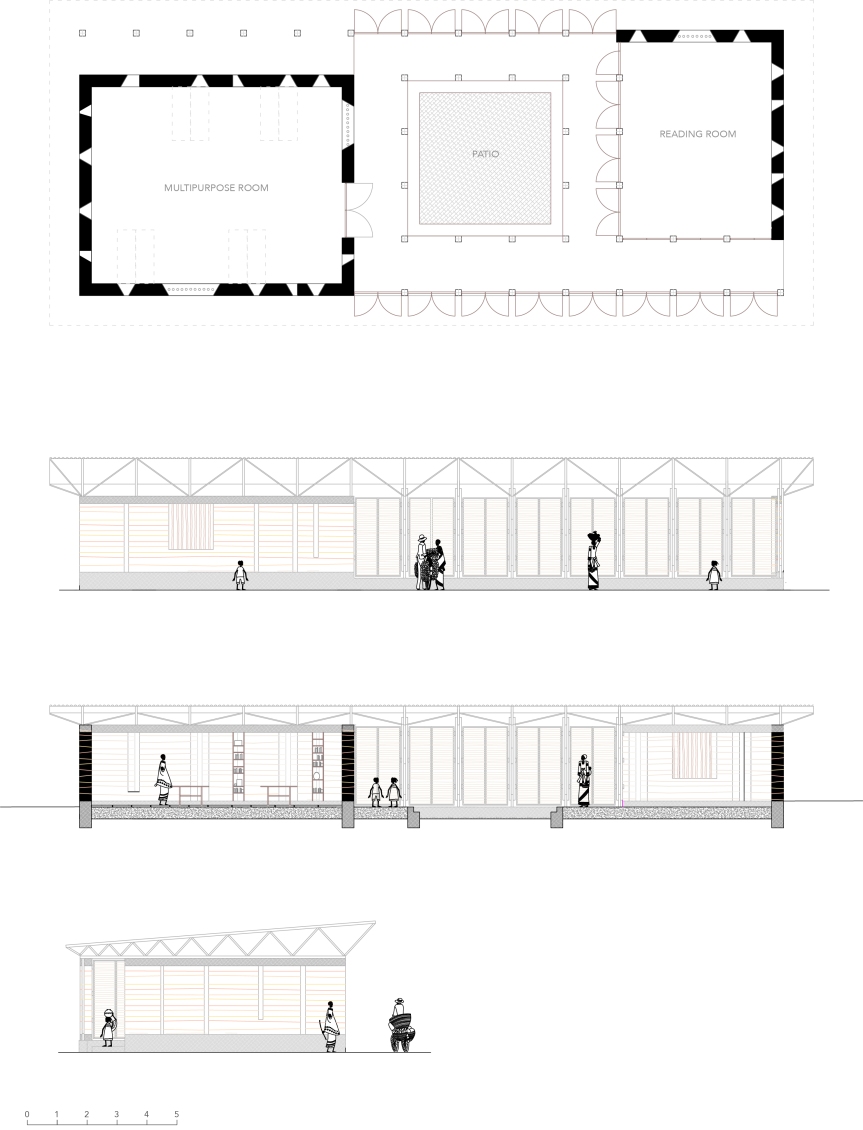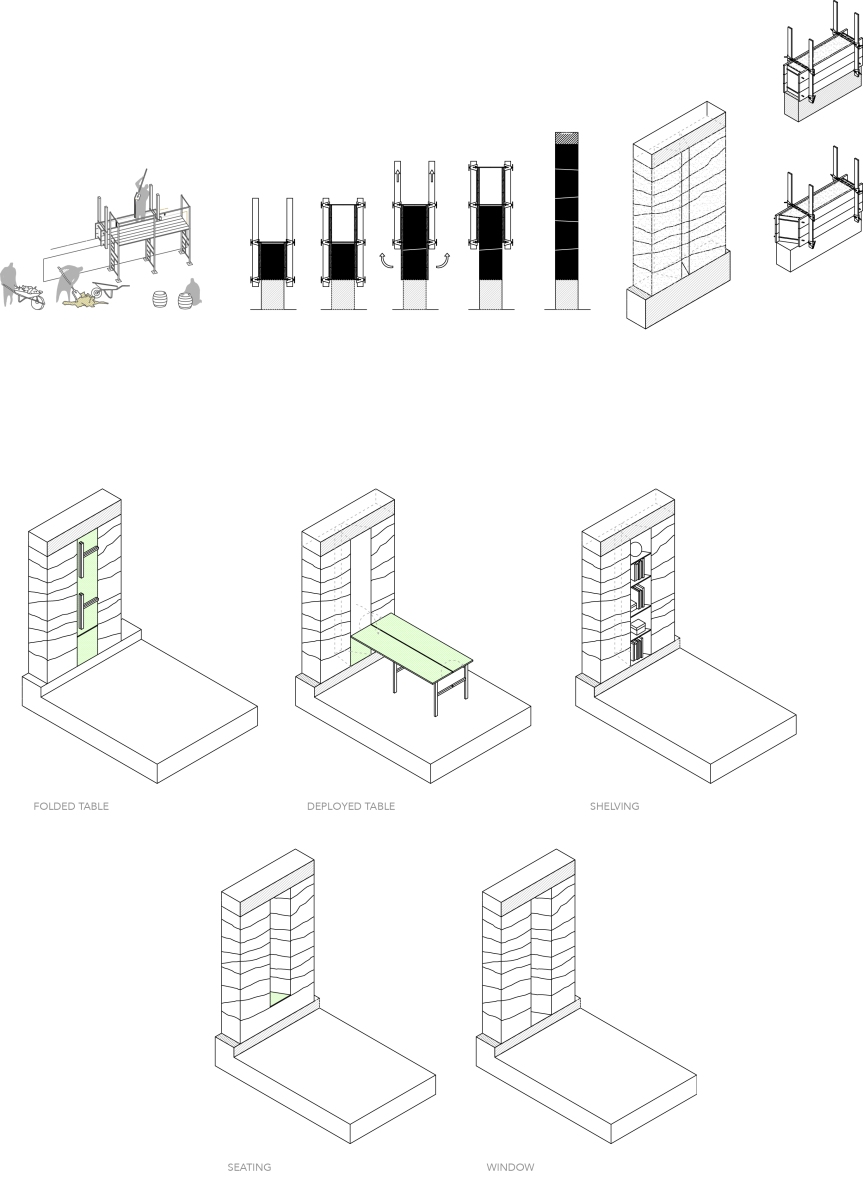We want to share with all of you the drawings we made in our interest to continue developing and exploring the earth techniques we want to use in Tanzania. We adapted the earth prototype we submitted for the competition to respond to the new program; the library.
The configuration of the plan allows the existence of spaces with different level of privacy and combines the use of thick solid rammed earth walls with lightweight claddings that can be kept closed to preserve privacy or widely open, which also allows cross ventilation throughout the building.
The most enclosed room is conceived as a multifunctional space to carry out different activities such us lectures, meetings, classes… The semi-enclosed room is conceived as a lecture room, together with the courtyard. The backwall is reserved for water harvesting.
Sustainable design principles are at the heart of the architectural approach. The main material used is rammed earth, following the traditional method of construction. A zinc-roof is designed for optimum natural ventilation, and to collect rainwater for treatment and reuse. Timber is used for roof trusses and pilars and the whole building is elevated over a plin made of rocks collected from the surrounding area.

Geometric rills cut into the earth walls during construction introduce light and ventilation as allow saving costs in frames; its treatment throughout varies in depth, width and height result in different levels of privacy and therefore define uses for different parts of the house.
In this way, we can find holes used as windows, but also others used as shelves to store books, seats or folded tables.
Taken overall, our mud house might be regarded as a mini manifesto for earth architecture, not just in Kibaoni but in other parts of the country too. Contrary to the abuse of concrete as a building material, that raises the cost and therefore the poverty of so many expanding communities, it shows how new earthen buildings can be inserted into the existing frame at increased densities, while sustaining traditional building techniques and preserving the natural environment.


